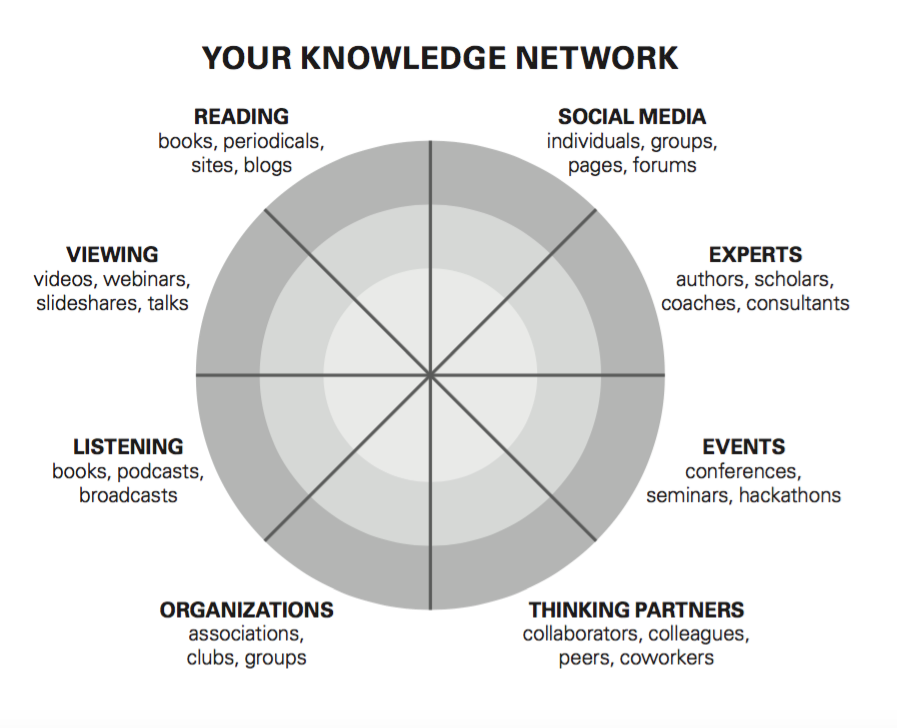Overcoming the Not-Invented-Here (NIH) Mindset

When Chris Messina, a former Google designer, conceived of a simple way to filter content and create channels on Twitter in 2007, he blogged about his idea:
“Every time someone uses a channel tag to mark a status, not only do we know something specific about that status, but others can eavesdrop on the context of it and then join in the channel and contribute as well. Rather than trying to ping-pong discussion between one or more individuals with daisy-chained @replies, using a simple #reply means that people not in the @reply queue will be able to follow along, as people do with Flickr or Delicious tags. Furthermore, topics that enter into existing channels will become visible to those who have previously joined in the discussion. And, perhaps best of all, anyone can choose to leave or remove topics that don’t interest them.”
His idea was complete with syntax (rules) for how it would work, such as “No one owns or administers a tag channel,†and “A channel is created the first time someone posts a status with a channel tag.†He included Twitter page prototypes, as well as a test case focused on the popular SXSW conference. In other words, he had proof of concept.
Twitter’s reaction to his proposal? As Messina later told the Wall Street Journal, “[Twitter] told me flat out, ‘These things are for nerds. They’re never going to catch on.’â€
Messina was a victim of the Not Invented Here syndrome, aka NIH, which is still alive and well not only in business, but wherever people are put in the position of considering ideas developed elsewhere. NIH is defined as a strong resistance to, or automatic rejection of, concepts—knowledge, ideas, solutions—produced somewhere else, somewhere external to the individual or team, often resulting in an unnecessary reinvention of the wheel. The pairing of these two aspects, external idea origination and immediate internal devaluation, is the defining characteristic of NIH.
The question is, why does NIH persist, and what can we do about it?
As it turns out, science may provide the answer to the first part. Absorbing and processing new ideas and knowledge taxes our brain, specifically the prefrontal cortex, where our deepest thinking occurs. But, we are wired to preserve our resources, mental and otherwise, so we resist new ideas naturally and automatically, not because the ideas are bad, but because we would rather not expend the enormous energy it takes to focus dense attention and make new connections. The feeling is uncomfortable, so we avoid it.
Now, when we solve a problem ourselves, at the moment of insight around which new and complex connections are made, the brain releases an adrenaline-like rush of neurochemicals. So there’s a chemical reward when we produce a new idea, one that doesn’t exist when we try to embrace others’ ideas. So not only is coming up with our own ideas cognitively easier than assimilating ideas of others, there’s a real payoff.
The essential problem with NIH, though, is a lack of learning, the net result often being some combination of being gloriously wrong and wasting valuable resources metaphorically reinventing the wheel.
THE FIX
Fixing NIH is simple, but perhaps not easy.
At the individual level, it amounts to doing what Steve Jobs did by adopting Pablo Picasso’s famous quote: “Bad artists copy, great artists steal.” Jobs didn’t suffer from NIH. If he had, he might have never even considered the pleas of Apple engineers Jef Raskin and Bill Atkinson to visit the Xerox Palo Alto Research Center (PARC) in 1979, much less be persuaded to do so. He might never have seen the future of computing and taken the Xerox interface for Apple’s use, boasting later that “we have always been shameless about stealing great ideas.†And, in the second chapter of his career, after retaking the Apple helm after years of non-Jobsian leadership characterized by an acute case of NIH syndrome, Steve Jobs might never have brought in industrial designer Jonathan Ive to help him revitalize the company. And had Jonathan Ive suffered from NIH, he might never have “stolen†the design stylings and aesthetics of one Dieter Rams, genius designer of Braun fame. But Steve Jobs and Jonathan Ive were immune to NIH, as great artists are, and as a result achieved an unparalleled level of co-created product design that produced world-changing commercial elegance. They wore that immunity like a badge of honor.
At the organization level, it amounts to institutionalizing an outside-in “open innovation” program like Procter & Gamble’s then-CEO A. G. Lafley did in 2000 when he mandated that fully 50% of P&G’s new products had to be originated outside of the company. Yes, you read that right…50%. The coin termed was Proudly-Found-Elsewhere, and the program was called “Connect and Develop.”
What do you do if you don’t happen to have the clout of an A.G. Lafley to issue a company-wide mandate? What do you do if you’re essentially the CEO of You, Inc.? Two tools can help.
1. Open Hackathons. Hackathons have moved well beyond the technology-only focus that “hack†conjures up, to become a valid method of bringing a diverse and passionate group of people—designers, storytellers, marketers, coders, entrepreneurs—together over a short time to solve real world problems and produce a basket of strong ideas. Innovation is a contact sport, and having dozens of talented individuals rub shoulders and put their heads together is bound to produce something profound. Hackathons need not be open to the public; internal hackathons bring the same boundary-breaking enthusiasm and engagement that help to rid the culture of NIH.
2. Knowledge Network. During my tenure at University of Toyota, we encouraged individuals to engage fully with the outside, and to create what we termed a Knowledge Network, in much the same way P&G created a network of innovation partners with whom they could connect. Today, it’s easier than ever to “connect and develop†with a wide variety of knowledge sources—you probably have dozens of ways in the palm of your hand, on your mobile device. The goal of creating a knowledge network is to become more productive and commercially valuable by exploring and exploiting the talents of others and bringing their idea into your own repertoire. One way to visualize a knowledge network is as a radar screen or target, segmented by categories of knowledge sources you find valuable and helpful.

To turn this visual into a useful tool, think about three possible levels of connections: the outer circle representing your loosest connections, and those in your inner most circle being your highest quality connections. A high quality connection is one that you reference and connect with constantly. The information, knowledge, and guidance you receive is excellent, and enables you to be faster, better, and smarter. The connection is also characterized by easy access. Your relationship to individuals is characterized by high levels of dialogue, responsiveness, and collaboration. Your high quality connections enable you to get ahead. To continuously improve the value of your knowledge network, focusing on deepening ties to those with the potential to become part of your inner circle.
When I taught an experimental course on creativity and innovation for second-year MBA students at Pepperdine University in Malibu, California, I encouraged them to “connect and develop†through a knowledge network. Years later, I still receive notes from students telling me how their knowledge network has helped them to be more successful business professionals.
One of the best places to launch a knowledge network is at a hackathon. And if you’re participating in a hackathon, don’t give NIH a second thought. You’ve already beat it.
Wait! Before you go…
Choose how you want the latest innovation content delivered to you:
- Daily — RSS Feed — Email — Twitter — Facebook — Linkedin Today
- Weekly — Email Newsletter — Free Magazine — Linkedin Group
 Matthew E. May is the author, most recently, of Winning the Brain Game: Fixing the 7 Fatal Flaws of Thinking.
Matthew E. May is the author, most recently, of Winning the Brain Game: Fixing the 7 Fatal Flaws of Thinking.
NEVER MISS ANOTHER NEWSLETTER!
LATEST BLOGS
Credit Card Shenanigans
It must be great to be in the credit card business in the United States. Demand is relatively inelastic and regulation is lax, so you can charge whatever you want for an interest rate, increase your fees once or twice a year, and make additional money off cash withdrawals and foreign exchange transactions.
Read MoreBuilding an Experience
As people become ever more immune to traditional advertising and marketing, branding will become more important. Branding is all about building an emotional connection with customers. Making the decision to follow a strategy focused on building a brand is not without peril, however, as it means that you will have to choose to not do certain things, like pursue a low price strategy.
Read More- « Previous
- 1
- …
- 4,132
- 4,133
- 4,134




